Pather Panchali (Bengali: ???? ??????? , "Song of the Little Road") is a 1955 Indian Bengali-language drama film written and directed by Satyajit Ray and produced by the Government of West Bengal. It is based on Bibhutibhushan Bandyopadhyay's 1929 Bengali novel of the same name and is Ray's directorial debut. It features Subir Banerjee, Kanu Banerjee, Karuna Banerjee, Uma Dasgupta and Chunibala Devi. The first film in the Apu trilogy, Pather Panchali depicts the childhood of the protagonist Apu (Subir Banerjee) and his elder sister Durga (Uma Dasgupta) and the harsh village life of their poor family.
| Pather Panchali | |
|---|---|
A poster of Pather Panchali | |
| Directed by | Satyajit Ray |
| Screenplay by | Satyajit Ray |
| Based on | Pather Panchali by Bibhutibhushan Bandyopadhyay |
| Starring | Subir Banerjee Kanu Banerjee Karuna Banerjee Uma Dasgupta Chunibala Devi Tulsi Chakrabarti |
| Music by | Ravi Shankar |
| Cinematography | Subrata Mitra |
| Edited by | Dulal Dutta |
Production company | Government of West Bengal |
| Distributed by | Aurora Film Corporation (1955) Edward Harrison (1958) Merchant Ivory Productions Sony Pictures Classics (1995) |
Release date |
|
Running time | 112–126 minutes |
| Country | India |
| Language | Bengali |
| Budget | ?70,000–1,50,000 (US$14,600–31,300) |
Production was interrupted because of funding problems and it took nearly three years for the film to be completed. The film was shot mainly on location, had a limited budget, featured mostly amateur actors, and was made by an inexperienced crew. The sitar player Ravi Shankar composed the film's soundtrack and score using classical Indian ragas. Subrata Mitra was in charge of the cinematography while editing was handled by Dulal Dutta. Following its premiere on 3 May 1955 during an exhibition at New York's Museum of Modern Art, Pather Panchali was released in Calcutta later the same year to an enthusiastic reception. A special screening was attended by the Chief Minister of West Bengal and the Prime Minister of India. Critics have praised its realism, humanity, and soul-stirring qualities while others have called its slow pace a drawback, and some have condemned it for romanticising poverty. Scholars have commented on the film's lyrical quality and realism (influenced by Italian neorealism), its portrayal of the poverty and small delights of daily life, and the use of what the author Darius Cooper has termed the "epiphany of wonder", among other themes.
The tale of Apu's life is continued in the two subsequent installments of Ray's trilogy: Aparajito (The Unvanquished, 1956) and Apur Sansar (The World of Apu, 1959). Pather Panchali is described as a turning point in Indian cinema, as it was among the films that pioneered the Parallel Cinema movement, which espoused authenticity and social realism. The first film from independent India to attract major international critical attention, it won India's National Film Award for Best Feature Film in 1955, the Best Human Document award at the 1956 Cannes Film Festival, and several other awards, establishing Ray as one of the country's most distinguished filmmakers. It is often featured in lists of the greatest films ever made.
Screenplay
In Nischindipur, rural Bengal, in the 1910s, Harihar Roy (Kanu Banerjee) earns a meagre living as a pujari (priest), but dreams of a better career as a poet and playwright. His wife Sarbajaya (Karuna Banerjee) takes care of their children, Durga (Uma Dasgupta) and Apu (Subir Banerjee), and Harihar's elderly cousin, Indir Thakrun (Chunibala Devi). Because of their limited resources, Sarbajaya resents having to share her home with the old Indir, who often steals food from their already bare kitchen. At times, Sarbajaya's taunts become offensive, forcing Indir to take temporary refuge in the home of another relative. Durga is fond of Indir and often gives her fruit she has stolen from a wealthy neighbour's orchard. One day, the neighbour's wife accuses Durga of stealing a bead necklace (which Durga denies) and blames Sarbajaya for encouraging her tendency to steal.
As the elder sibling, Durga cares for Apu with motherly affection, but spares no opportunity to tease him. Together, they share the simple joys of life: sitting quietly under a tree, viewing pictures in a travelling vendor's bioscope, running after the candy man who passes through the village, and watching a jatra (folk theatre) performed by a troupe of actors. Every evening they are delighted by the sound of a distant train's whistle. One day, they run away from home to catch a glimpse of the train, only to discover Indir lying dead on their return.
Unable to earn a good living in the village, Harihar travels to the city to seek a better job. He promises Sarbajaya that he will return with money to repair their dilapidated house. During his absence, the family sinks deeper into poverty. Sarbajaya grows increasingly lonely and bitter. One day during the monsoon season, Durga plays in the downpour for too long, catches a cold and develops a high fever. Adequate medical care being unavailable, the fever becomes worse, and on a night of incessant rain and gusty winds, she dies. Harihar returns home and starts to show Sarbajaya the merchandise he has brought from the city. Sarbajaya, who remains silent, breaks down at the feet of her husband, and Harihar cries out in grief as he discovers that he has lost his daughter. The family decide to leave their ancestral home. As they start packing, Apu finds the necklace that Durga had earlier denied stealing; he throws it into a pond. Apu and his parents leave the village on an ox-cart.
- Kanu Banerjee as Harihar Roy
- Karuna Banerjee as Sarbajaya Roy
- Subir Banerjee as Apurba Roy (Apu)
- Runki Banerjee as Durga Roy (child)
- Uma Dasgupta as Durga Roy (teenager)
- Chunibala Devi as Indir Thakrun, the old aunt
- Tulsi Chakraborty as Prasanna, school teacher
- Haren Banerjee as Chinibas
Novel and title
Bibhutibhushan Bandopadhyay's novel Pather Panchali is a classic bildungsroman (a type of coming-of-age story) in the canon of Bengali literature. It first appeared as a serial in a Calcutta periodical in 1928, and was published as a book the next year. The novel depicts a poor family's struggle to survive in their rural ancestral home and the growing up of Apu, the son of the family. The later part of the novel, where Apu and his parents leave their village and settle in Benaras, formed the basis of Aparajito (The Unvanquished, 1956), the second film of the Apu trilogy.
Satyajit Ray, working as a graphic designer for Signet Press, created the illustrations for a new abridged edition of the book in 1944. At that time, Ray read the unabridged novel; Signet's owner D. K. Gupta told Ray that the abridged version would make a great film. The idea appealed to Ray, and around 1946–47, when he considered making a film, he turned to Pather Panchali because of certain qualities that "made it a great book: its humanism, its lyricism, and its ring of truth". The author's widow permitted Ray to make a film based on the novel; the agreement was in principle only, and no financial arrangement was made.
The Bengali word path literally means path, and pather means "of the path". The word panchali refers to a type of narrative folk song that used to be performed in Bengal and was the forerunner of another type of folk performance, the jatra. English translations of the Bengali title include Song of the Little Road, The Lament of the Path, Song of the Road, and Song of the Open Road.
Script
Pather Panchali did not have a script; it was made from Ray's drawings and notes. Ray completed the first draft of the notes during his sea voyage to and from London in 1950. Before principal photography began, he created a storyboard dealing with details and continuity. Years later, he donated those drawings and notes to Cinémathèque Française.
In Apur Panchali (the Bengali translation of My Years with Apu: A Memoir, 1994), Ray wrote that he had omitted many of the novel's characters and that he had rearranged some of its sequences to make the narrative better as cinema. Changes include Indir's death, which occurs early in the novel at a village shrine in the presence of adults, while in the film Apu and Durga find her corpse in the open. The scene of Apu and Durga running to catch a glimpse of the train is not in the novel, in which neither child sees the train, although they try. Durga's fatal fever is attributed to a monsoon downpour in the film, but is unexplained in the novel. The ending of the film—the family's departure from the village—is not the end of the novel.
Ray tried to extract a simple theme from the random sequences of significant and trivial episodes of the Pather Panchali novel, while preserving what W. Andrew Robinson describes as the "loitering impression" it creates. According to Ray, "the script had to retain some of the rambling quality of the novel because that in itself contained a clue to the feel of authenticity: life in a poor Bengali village does ramble." For Robinson, Ray's adaptation focuses mainly on Apu and his family, while Bandopadhyay's original featured greater detail about village life in general.
Casting
Kanu Banerjee (who plays Harihar) was an established Bengali film actor. Karuna Banerjee (Sarbajaya) was an amateur actress from the Indian People's Theatre Association, and the wife of Ray's friend. Uma Dasgupta, who successfully auditioned for the part of Durga, also had prior theatre experience.
For the role of Apu, Ray advertised in newspapers for boys of ages five to seven. None of the candidates who auditioned fulfilled Ray's expectations, but his wife spotted a boy in their neighbourhood, and this boy, Subir Banerjee, was cast as Apu. (The surname of three of the main actors happened to be Banerjee, but they were not related to each other). The hardest role to fill was the wizened old Indir. Ray eventually found Chunibala Devi, a retired stage actress living in one of Calcutta's red-light districts, as the ideal candidate. Several minor roles were played by the villagers of Boral, where Pather Panchali was filmed.
Filming
Shooting started on 27 October 1952. Boral, a village near Calcutta, was selected in early 1953 as the main location for principal photography, and night scenes were shot in-studio. The technical team included several first-timers, including Ray himself and cinematographer
Watch movie Pather Panchali online on Amazon
Watch movie Pather Panchali online
Watch The Movie On PrimeMard Full HD Movie Download
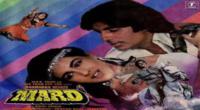
Aaj Aur Kal Full HD Movie Download
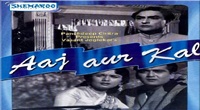
Banjaran Full HD Movie Download
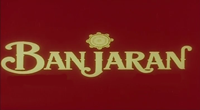
Aur Ek Prem Kahani Full HD Movie Download
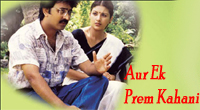
Apne Rang Hazar Full HD Movie Download
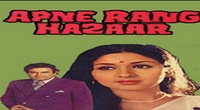
Bengal Tiger Full HD Movie Download
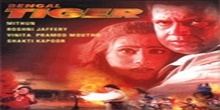
Dulara Full HD Movie Download
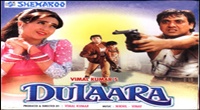
Appula Apparao Full HD Movie Download
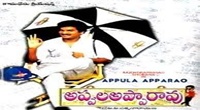
Ullasam Full HD Movie Download
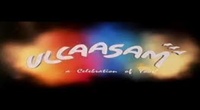
Jeet-Born To Win Full HD Movie Download

Addhuri: Achhu-Rachchu Love Story Full HD Movie Download

Rajakali Amman Full HD Movie Download
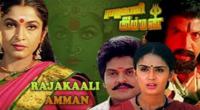
Datta Putrudu Full HD Movie Download
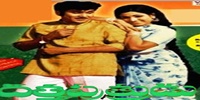
Chal Gajya Karu Majaa Full HD Movie Download
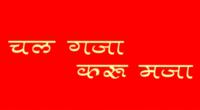
The Matrix Full HD Movie Download

The Flying Deuces Full HD Movie Download
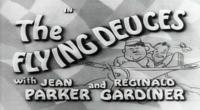
Aalkkoottathil Thaniye Full HD Movie Download

Shalabam Full HD Movie Download

Desa Drohulu Full HD Movie Download
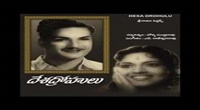
Neal n Nikki Full HD Movie Download

Kabhi Kabhi Full HD Movie Download
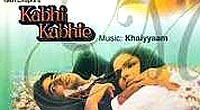
Download latest Movie from bollywood
- 1> baaghi 3
- 2> THE SKY IS PINK MOVIE FULL STORY AND REVIEW
- 3> Luka Chuppi
- 4> TO ALL THE BOYS I’VE LOVED BEFORE
- 5> Kabir Singh
- 6> Street Dancer 3D
- 7> Simmba
- 8> Gone Girl
- 9> The Girl Who Lived
- 10> Ludo
- 11> DILWALE DULHANIA LE JAYENGE
- 12> GUILTY
- 13> The Godfather
- 14> Adventures of Rusty
- 15> Sooryavanshi
- 16> Satyameva Jayate 2
- 17> Thappad
- 18> Bhool Bhulaiyaa 2
- 19> KGFChapter 2
- 20> Mardaani 2
- 21> Pinjar
- 22> Shivaji maharaj
- 23> Ek Villian 2
- 24> Hungama 2
- 25> Divergent
- 26> Mumbai Saga
- 27> The Internship
- 28> HIT (telugu)
- 29> Panga
- 30> The perfect date
- 31> 16 December
- 32> Gopala Gopala (Telugu)
- 33> Brahmastra
- 34> Gangubai Kathiawadi
- 35> Manmadhudu
- 36> Nenu local
- 37> Mahanati
- 38> Shatamanam bavathi
- 39> Lagaan
- 40> After
- 41> MOM
- 42> Shamshera
- 43> Raguvaran BTech
- 44> Khakee
- 45> The villain
- 46> OM
- 47> Mr. perfect
- 48> Bueatifull mind
- 49> Hichki
- 50> Gabbar Singh
- 51> Jogi
- 52> Before Sunrise
- 53> Before Sunset
- 54> Before Midnight
- 55> The Big Bull
- 56> Top Gun: Maverick
- 57> The Purge
- 58> The Sky is Pink
- 59> Laxmmi Bomb
- 60> Sadak 2
- 61> Sufna
- 62> Prithviraj
- 63> PK
- 64> Coolie No 1(2020)
- 65> Black Widow
- 66> Dear Zindagi
- 67> Dil Bechara
- 68> PHIR HERA PHERI
- 69> WAR
- 70> Dostana
- 71> RRR: Roudram Ranam Rudhiram
- 72> Maidan
- 73> Dabbang 3
- 74> Chhalaang
- 75> life as we know it
- 76> SherShaah
- 77> Sandeep Aur Pinky Faraar
- 78> Event Horizon
- 79> 83
- 80> Radhe: Your Most Wanted Bhai
- 81> Gunjan Saxena: The Kargil Girl
- 82> Mr India
- 83> Vivah
- 84> Anokha Bandhan
- 85> Ghost
- 86> Bhoot: Part One - The Haunted Ship
- 87> Haseen Dilruba
- 88> Laal Singh Chaddha
- 89> Qismat
- 90> Rajput
- 91> Drive
- 92> Dil Chahta Hai
- 93> Dil Ki Baazi
- 94> Dil Ka Rishta
- 95> Teesri Manzil
- 96> Dil
- 97> Love Aaj Kal
- 98> Khaali Peeli
- 99> Bunty Aur Babli 2
- 100> Atrangi Re
- 101> Gulabo Sitabo
- 102> Jodi
- 103> Suraj Pe Mangal Bhari
- 104> Deewana
- 105> Attack
- 106> Sardar Udham Singh
- 107> Toofan
- 108> THE LOVEBIRDS
- 109> Jersey
- 110> Ginny Weds Sunny
- 111> Thalaivi
- 112> Shiddat
- 113> Angels vs Zombies
- 114> Koi Mil Gya
- 115> Thank God
- 116> Bhuj: The Pride of India
- 117> Hum Aapke Hain Kaun
- 118> The Platform
- 119> Bird Box
- 120> Roohi Afzana
- 121> Torbaaz
- 122> Nikamma
- 123> World War Z
- 124> Extraction
- 125> Train to Busan
- 126> Life of Pi
- 127> SHAADI MEIN JROOR AANA
- 128> Himmat Aur Mehnat
- 129> To All The Boys: P.S. I Still Love You
- 130> Mimi
- 131> Good Newwz
- 132> Shubh Mangal Zyada Saavdhan
- 133> Raabta
- 134> Harry Potter and the Philosopher's Stone
- 135> Harry Potter and the Chamber of Secrets
- 136> Chhapaak
- 137> War of the Worlds
- 138> Harry Potter and the Prisoner of Azkaban
- 139> Harry Potter and the Goblet of Fire
- 140> MURDER MYSTERY
- 141> Shakuntala Devi
- 142> Bachchan Pandey
- 143> Jayeshbhai Jordar
- 144> Sheer Qorma
- 145> Saina
- 146> 'O' Pushpa I hate tears
- 147> Kedarnath
- 148> MS Dhoni The Untold Story
- 149> Chhichhore
- 150> Badhaai Ho
- 151> Unstoppable
- 152> Oz the Great And Powerful
- 153> The Girl on the Train
- 154> Haathi Mere Saathi 2020
- 155> The Conjuring: The Devil Made Me Do It
- 156> Gandhi Se Pehle Gandhi
- 157> The Song of Scorpions
- 158> Srimanthudu
- 159> Hello Guru Prema Kosame
- 160> Beauty and The Beast
- 161> Black Panther
- 162> Charlie and the Chocolate Factory
- 163> Bole Chudiyan
- 164> Fidaa
- 165> Duvvada Jagannadham
- 166> Bruce Lee: The Fighter
- 167> Hyper
- 168> Yaara
- 169> Red (2020)
- 170> Shivam
- 171> That Is Mahalakshmi
- 172> Nishabdham
- 173> Aashram 2020 web series
- 174> Laxmii
- 175> Mismatched
- 176> STUDENT OF THE YEAR 2
- 177> NAIL POLISH
- 178> Ramprasad Ki Tehrvi
- 179> KAAGAZ
- 180> 12 o Clock
- 181> The Power
- 182> bolo hau
- 183> Tribhanga
- 184> JAMUN
- 185> Madam Chief Minister
- 186> Maasaab
- 187> Aadhaar
- 188> Tanhaji
- 189> Bhaagi 3
- 190> Bhootnath
- 191> MALANG
- 192> Jai Mummy Di
- 193> Haathi Mere Saathi 2021
- 194> Shakeela
- 195> Unpaused
- 196> Annayya
- 197> Vamsoddharakudu
- 198> Mrugaraju
- 199> Narasimha Naidu
- 200> Sankranti
- 201> Manasu Maata Vinadhu
- 202> Anjaane
- 203> Apaharan
- 204> Bachke Rehna Re Baba
- 205> Bewafaa
- 206> Roohi
- 207> Radhe
- 208> Zindagi Khoobsoorat Hai
- 209> Yeh Mohabbat Hai
- 210> Yeh Kya Ho Raha Hai?
- 211> The Tomorrow War
- 212> DehradunDiary
- 213> Meri Shaadi Karaoo
- 214> Matruu Ki Bijlee Ka Mandola
- 215> No One Killed Jesica
- 216> Aag Ka Goola
- 217> Eight Million Dollars
- 218> Three Hundred
- 219> Cats and Dog
- 220> Decoy
- 221> Gold Rush
- 222> You Have Got Mail
- 223> Final Destination three
- 224> Tofan
- 225> Jungle
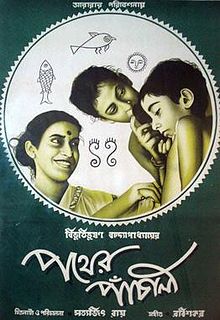 Story of movie Pather Panchali :
Story of movie Pather Panchali : 